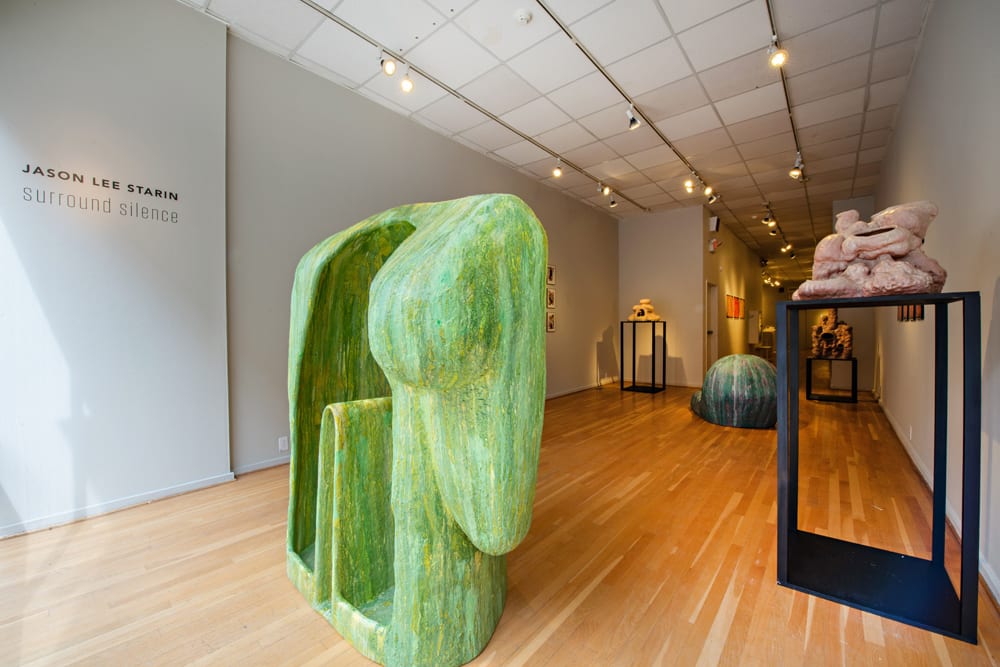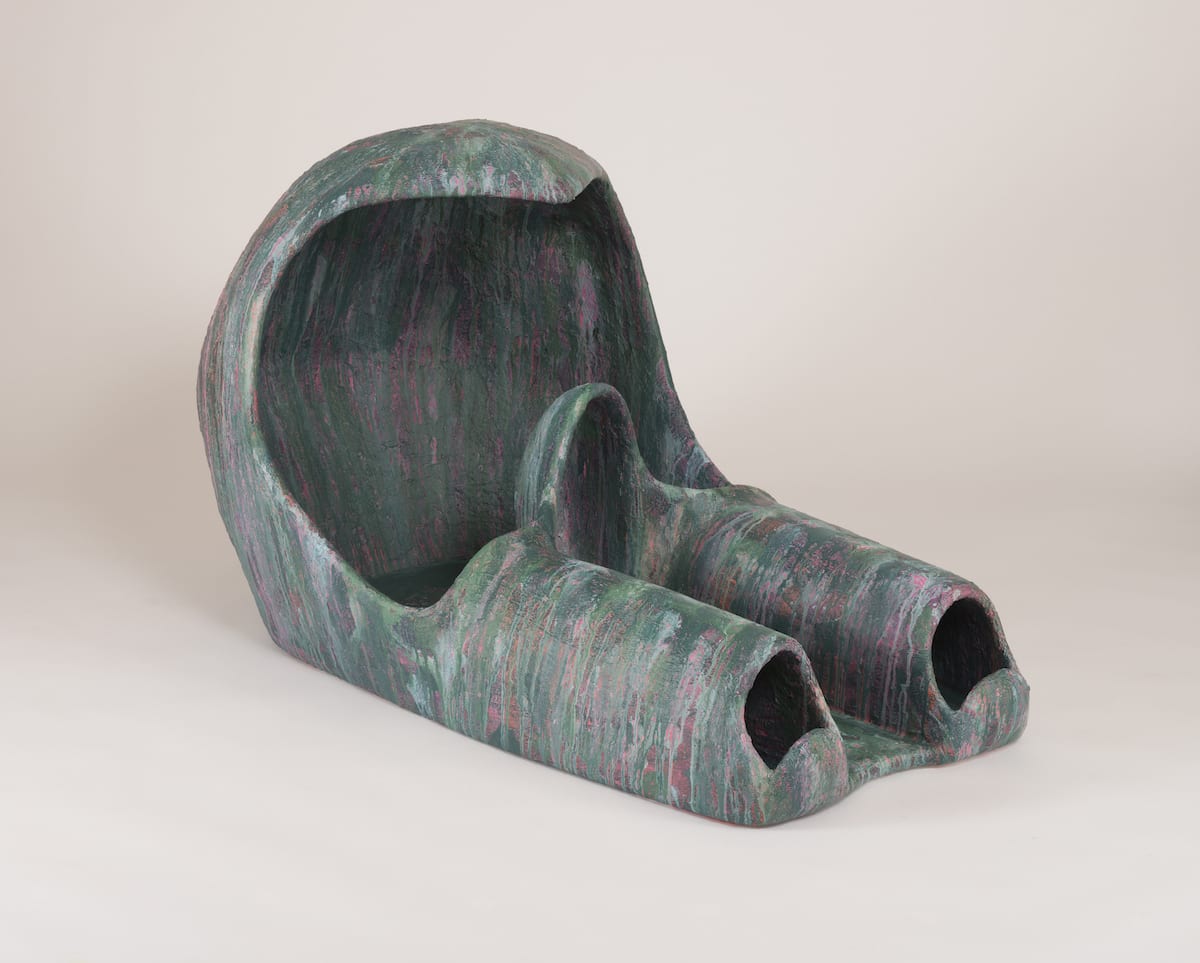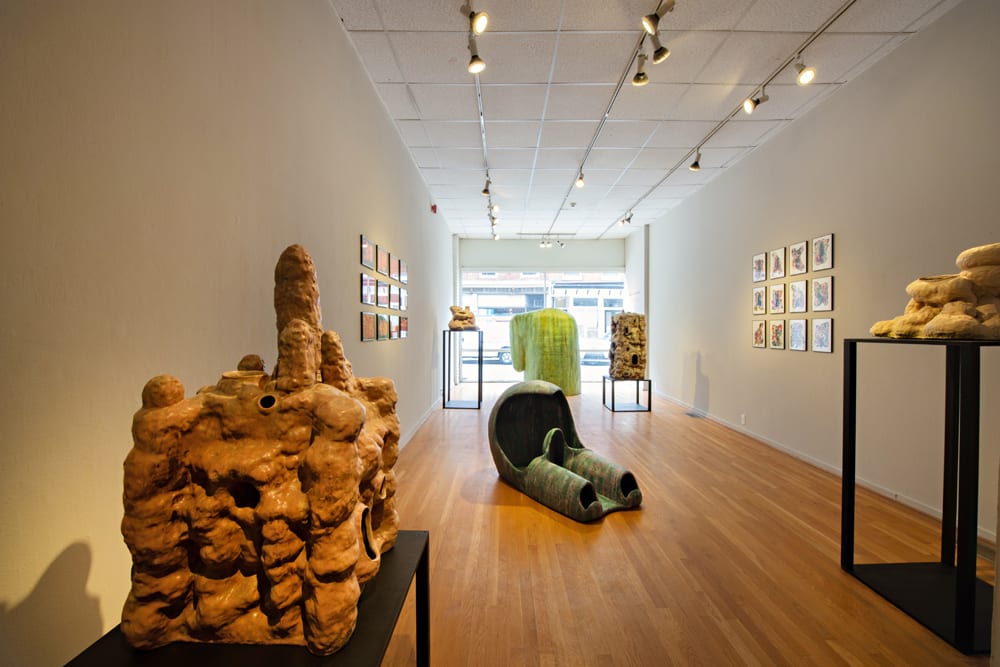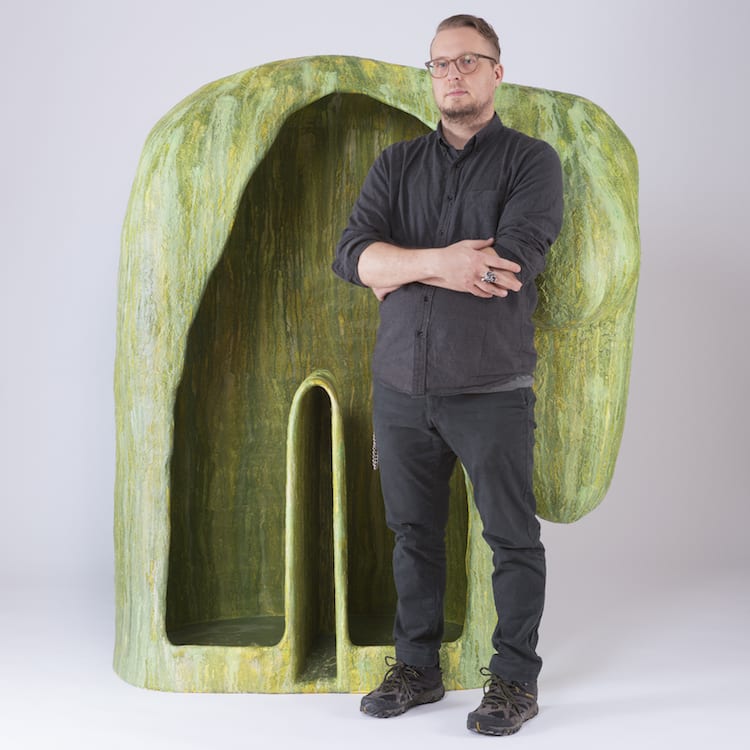PHILADELPHIA––Geomythology (also called “legends of the earth, “myths of observation,” “natural knowledge,” and “physico-mythology”) is the study of etiological oral traditions created by pre-scientific cultures to explain—in poetic metaphor and mythological imagery—geological phenomena such as volcanoes, earthquakes, floods, fossils, and other natural features of the landscape.1
Why do humans create fantastic explanations for how earth forms came to be? Is myth-making a first step in understanding our place in the universe? Inspired by pop-fantasy, sci-fi, occultism, and geomythology, Clay Studio Resident Artist Jason Lee Starin explores these questions in Surround Silence, his current exhibition at The Clay Studio in Philadelphia (Jan 19 – Mar 31, 2019).
Featured image: Jason Lee Starin, Personal Boundaries (Hunch), 2018, Polystyrene, joint compound, papier-mâché, acrylic paint, photo credit: John Carlano

Starin researches contemporary and ancient legends in search of universal archetypes of the existential and sublime. He applies these paradigmatic concepts to his sculptural language in a way that provokes the viewer to experience a visceral reaction of thwarted desire. Visitor after visitor has reported feeling a physical urge to climb inside Starin’s large-scale sculptures, Hunch and Slump, while also feeling disappointment at knowing they were not allowed. Seldom have I experienced a show with work that evokes the exact reaction intended by the artist so consistently.

Awarded an Independence Foundation Fellowship Grant to pursue his interest in geomythology, Starin travelled to Skagaströnd, Iceland, to be a resident artist at the NES Foundation during the summer of 2018. Nestled on the west coast of one of Iceland’s upper northwest fjords, Skagaströnd is an isolated village with a population of 450 people. Buffered by winds from the saga-steeped plateau Spákonufell, or “Prophetess Mountain,” Skagaströnd is located where black-sand seas merge with an infinite grey skyline. Awestruck by the vast, unique strangeness of Iceland’s limitless rolling lava fields, primordial moss, boulder-covered tundra, caves cast from melting glacial flows, and towering basalt columns, Starin reflected on the origins of creation and echoed them in his monolithic and cavernous sculptures.
Studying Iceland’s mythological stories of morality, faith, madness, and survival and seeing the direct physical relationships to land formations broadened Starin’s appreciation for a landscape’s effect on indigenous origin stories and applied cultural meaning in general. Already aware of his sensitivity to place, he gained a more nuanced understanding of identity as it relates to surroundings. Moving from Portland to Philadelphia five years ago, his worldview–and therefore his artistic vision—was irrevocably altered. It was that realization of the importance of the culture and physicality of place that launched his interest in geomythology and led him to Iceland.

One of Starin’s sustaining beliefs is that humans have a need to explore what is possible by relinquishing certainty in exchange for vulnerability. This propels him to continuously pursue new landscapes; he is constantly seeking the universal truth that unites humanity. Starin offers the viewer a chance to experience that exploration vicariously through his sculptural forms. They are mysterious, inviting you to project yourself inside, be enveloped by the unknown, and confront your fears and desires in order to find your truth.
There are two types of sculptures, and two types of paintings in his Surround Silence show, though they present a unified artistic vision. The four large ceramic sculptures are complex cave-like forms that require circumambulation to explore the structure, interior spaces, and complex surfaces. Their somewhat loose handbuilt style belies the skill necessary to build, glaze, and successfully fire such structures. Two larger than human scale sculptures seem to invite the viewer inside, but consideration for climbing in is immediately relinquished when examining the delicate surfaces, and remembering that you are in a gallery setting where climbing into the art is undoubtedly frowned upon. The works on paper evoke the look forms of the sculptures, while creating a full environment for which to contemplate and question our internal and external perceptions of the natural world through Starin’s visualization of geomythology.

Jason Lee Starin’s work is well worthy of notice, and a visit to The Clay Studio gallery will be rewarded with a pleasant visceral reaction that is too rare. He is able to visually coalesce research on geomythology, ideas about universal human truths, and technical virtuosity into sculptural forms that transcend the sum of those parts. Jason Lee Starin is making noteworthy work; he deserves to be watched as he continues on his path of exploration.
1. Geomytholgy © Adrienne Mayor in Encyclopedia of Geology, ed. Richard Selley, Robin Cocks, and Ian Palmer. Elsevier, Fall 2004.
Love or loathe this exhibition from the world of contemporary ceramics and contemporary ceramic art. Share your thoughts in the comments section below.

Add your valued opinion to this post.